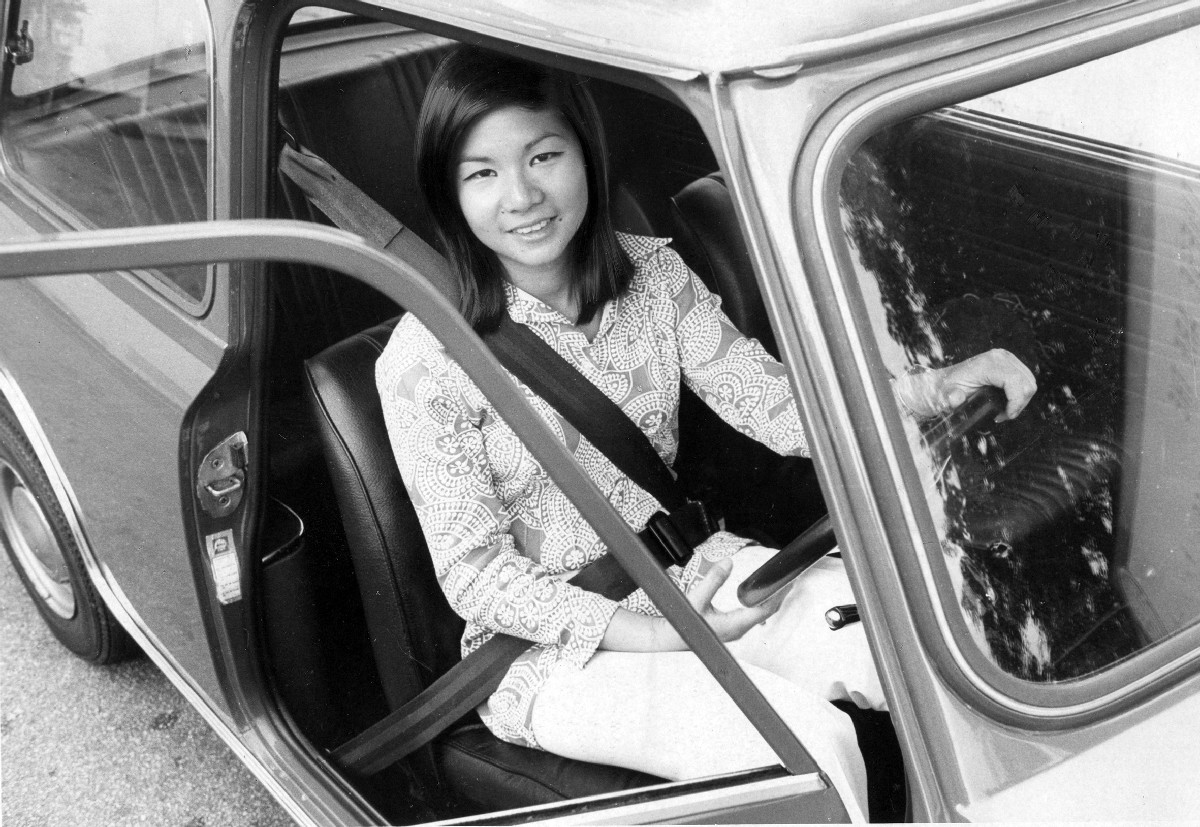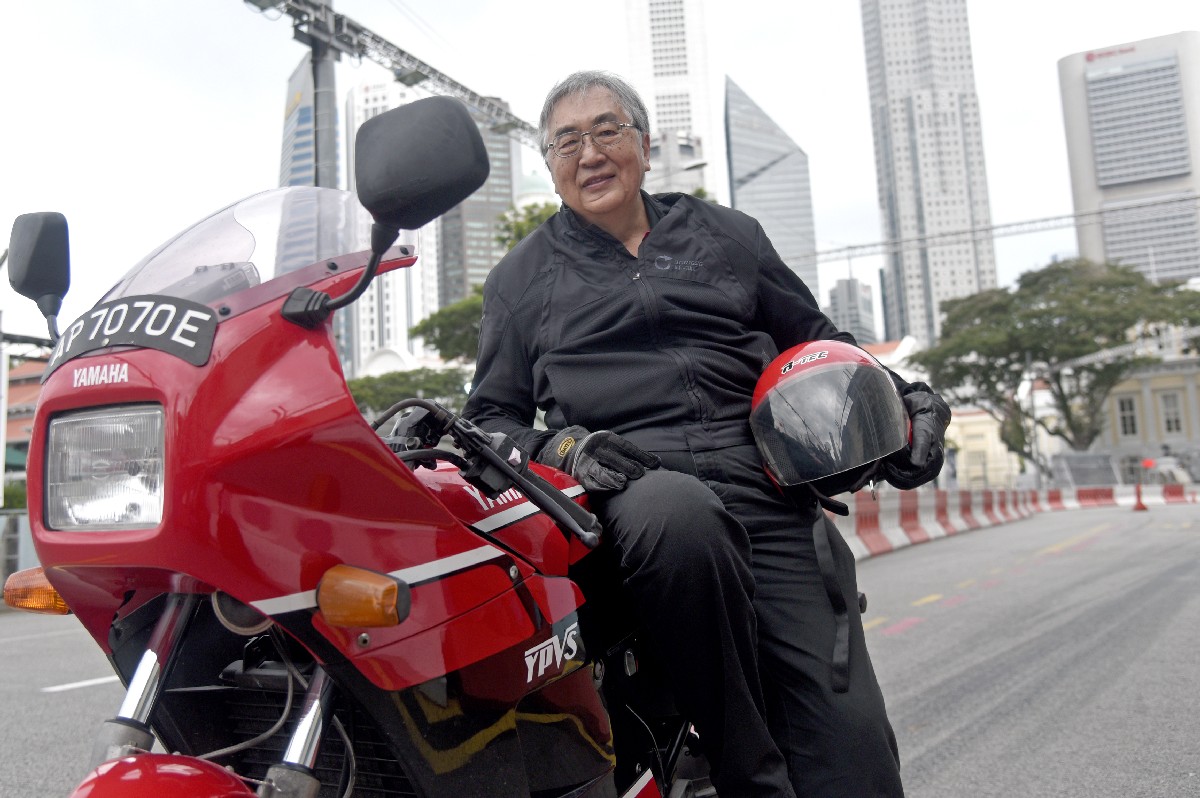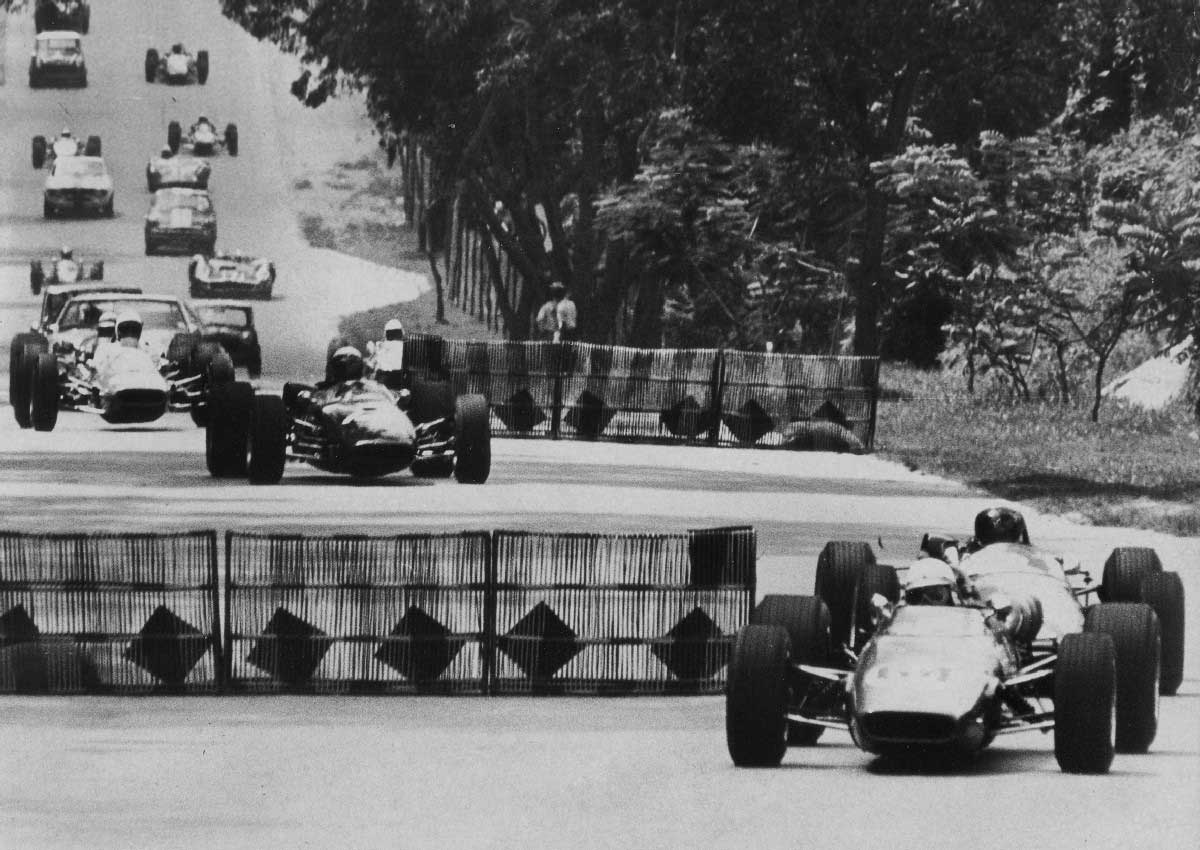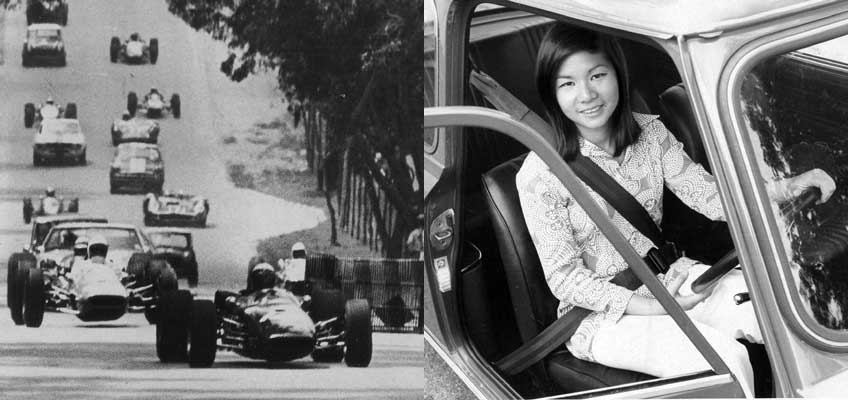Murder mile was a killer
Rumours of celebrities flying into town, parties with free-flowing champagne, road closures and, in the background, the piercing whine of supercars zooming by…
Yes, the Singapore Grand Prix is back in town.
The annual motorcar racing event will run this coming weekend and its events both on and off the track will be, as usual, organised with professionalism and glamour.
This was not always the case. More than 50 years ago, there was already a Grand Prix in Singapore, although it was scrappy and dusty and described as one of the most dangerous races in the world at that time.
Held here annually from 1961 to 1973, the race was organised to put Singapore on the tourist map.
In the first year, the 4.8km circuit ran through Old Upper Thomson Road, with sections nicknamed “Murder Mile” and “Devil’s Bend”.
Sandbags were used as obstacles. Different models of cars raced, often driven by amateur enthusiasts with other day jobs. Race day girls of different races wore demure kebayas, saris, evening gowns and the classic hairstyle of the Swinging Sixties: the beehive.
The races saw their share of accidents and deaths, however.
In 1967, a driver from Britain named Jim Hudson died after he skidded and was thrown off his motorcycle. In 1972, local speed king Lionel Chan also died after his car went off the road and crashed into a car parked nearby.
Eventually, the 1974 event was cancelled for safety reasons.
You can glean these tidbits in a new website by the National Archives called the Singapore Policy History Project (www.nas.gov.sg/archivesonline/policy_history).
It aims to shed light on aspects of Singapore history by uploading relevant documents, photographs, newspaper clippings and audio interviews.
The project has covered topics such as keeping communist propaganda at bay and mobile libraries, as well as the history of the Singapore Grand Prix.
The 1961 race was held over two days and sponsored by the then Ministry of Culture and organised by the former Singapore Motor Club.
An estimated 60,000 fans showed up and reportedly took up every inch of space around the circuit.
Two hundred drivers and riders participated, coming in their Lotus cars and Norton Manx motorcycles. Big brands such as Suzuki also sent in teams.
This circuit was distinguished by four bends and a dangerous V-shaped “Devil’s Bend”.
A flat stretch of the road, with a slight curve, was also nicknamed the “Murder Mile”.
“Those names are accurate,” says Mr Lee Chiu San, 70, a former Grand Prix racer who took part in the races from 1970 to 1973.
He adds: “Many racers thought the Murder Mile was an easy stretch and accelerated. But because of the drift during the stretch, some racers missed their alignment. That was how the Murder Mile could ‘kill’ you.”
Singapore’s motorcar racing culture went quiet for about 30 years, until the Grand Prix was brought back to Singapore in 2008 with the inaugural F1 night race.
For many racers back in the 1970s, the older Grand Prix was grittier but had a more inclusive atmosphere.
Mrs Anne Wong Holloway, 67, who raced in the 1970s in a Mini Cooper S, says: “In my day, entertainment was whatever was happening on the track.
“The Grand Prix now is a big show and a smooth operation.”
Queen of speed

Speed Queen: that was what Mrs Anne Wong Holloway, 67, was known as in her prime.
In the male-dominated sport of speedcar racing, she was one of the few female drivers, racing in Singapore, Malaysia and Macau in the 1970s. She became the first woman to win the Macau Grand Prix in 1970.
Although her performances at the Singapore Grand Prix were less memorable – she did not finish her first race in 1970 because her car engine broke down – competing on home ground was always special.
She got interested in racing because her father, Mr P.H. Wong, was in the business of preparing cars for racing.
She usually drove a Mini Cooper S. She says: “Motor racing has always been regarded as a man’s sport, from the days when cars were big, brutish and needed to be crank-started.
“They also needed to be repaired, which was a greasy, messy job.”
In her time, Grand Prix racing was very different from the “clinical, super-safe show that we see today”, she says. “In those days, the spectators got to see the action up close and knew all the people.”
Safety requirements were also less stringent and some drivers raced in shirts and trousers, instead of the fireproof driving suits typically donned today.
“These days, there are more rules and regulations.
“F1 racing has evolved to become totally professional… but in the process, you lose some of the friendly atmosphere.”
She stopped racing around the end of 1974. After that, she worked in advertising, public relations, promotions and business development jobs. Her last job in Singapore was looking after advertising and promotions for Borneo Motors.
She is married with no children.
Now, she plays down her glorious racing days, saying: “Only the older people can relate to that era. Many of you weren’t even born then.”
She drives to get around now, but accepts that one day, she will be too old to stay behind the wheel.
“I hope that when I retire from driving, there will be a decent taxi, Uber or Grab service available.”
He’s 70 and still pushing his limits

Former Grand Prix racer Lee Chiu San may be 70, but he still rides a motorcycle.
The retired car dealer and former motoring journalist scoots around in a 30-year-old Yamaha RD350 despite stares from younger riders.
He says: “They say I am old and shouldn’t be riding a motorcycle and that my bike sounds very loud.
“But older riders will know my bike was derived from a famous Grand Prix racing bike. And they get excited when they see it.”
Indeed, he had ridden earlier versions of his bike while participating in the Grand Prix races from 1970 to 1973.
Mr Lee – whose passion for motoring was sparked by his step-uncle Looi Im Heok, a motorcycle racer in the 1950s – first raced in the Grand Prix at age 24.
He says: “Uncle Looi sponsored me and three other racers to take part and we became quite successful under his guidance.”
Winning the race was not the most important thing, he said.
“Conquering the track was what mattered. After I completed a track in good time, I felt a sense of accomplishment that words could not describe.”
In those days, he recalls, a ticket cost between $1 and $15. A more expensive ticket would get you a seat on the grandstand, with shade.
Asked about the accidents and deaths that occurred during the event, he says: “These are sad stories. But it comes with the territory. After all, nobody forced us into the race.”
After the Grand Prix was called off in 1974 due to safety concerns, he continued motorcycle racing in Malaysia.
As the years went on, he also raced in cars. His last race was in 1996 for his 50th birthday.
He is married with no children.
Although his racing days are over, his love for motoring is not.
Five years ago, he rode along the famous Route 66 across the United States – from Chicago to Los Angeles – covering 3,900km as a personal challenge.
He says: “To me, riding is about conquering one’s fears and pushing one’s limits.
“I will never stop riding.”

This article was first published on September 11, 2016.
Get a copy of The Straits Times or go to straitstimes.com for more stories.
























































